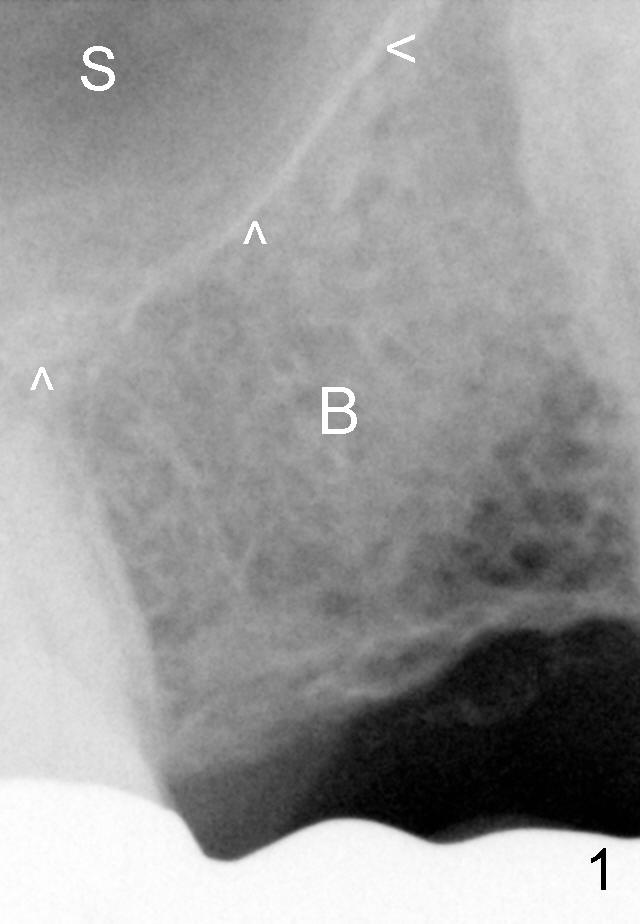
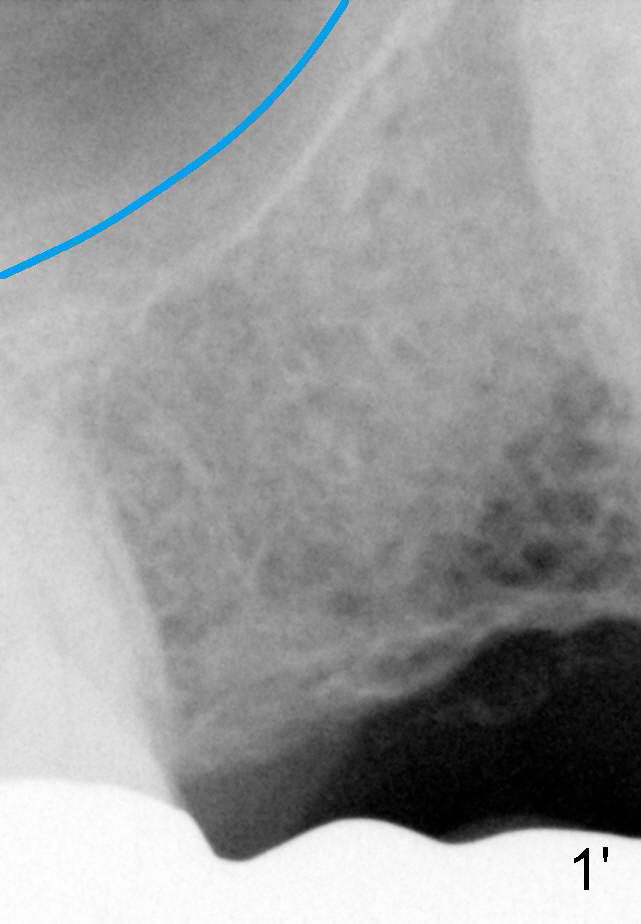
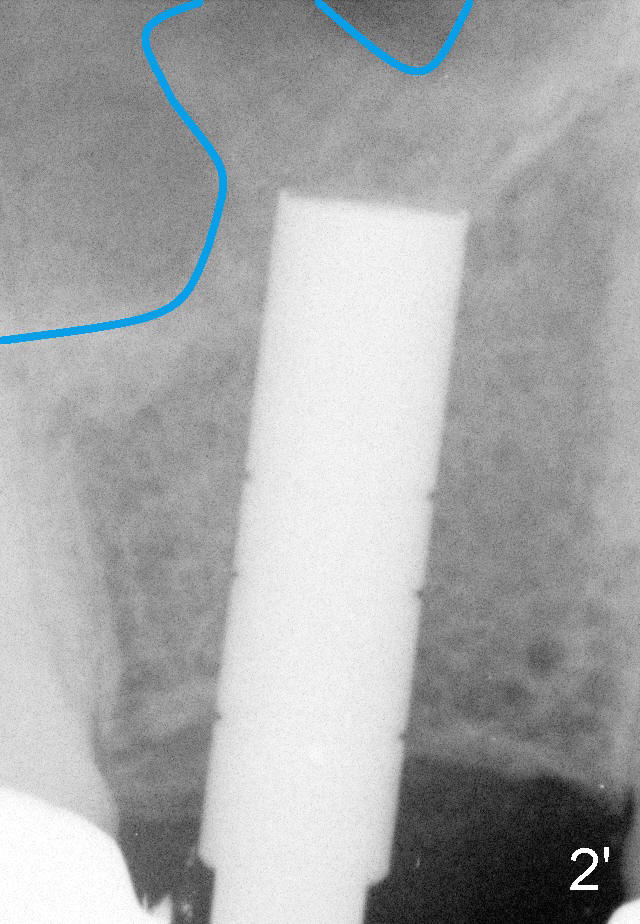
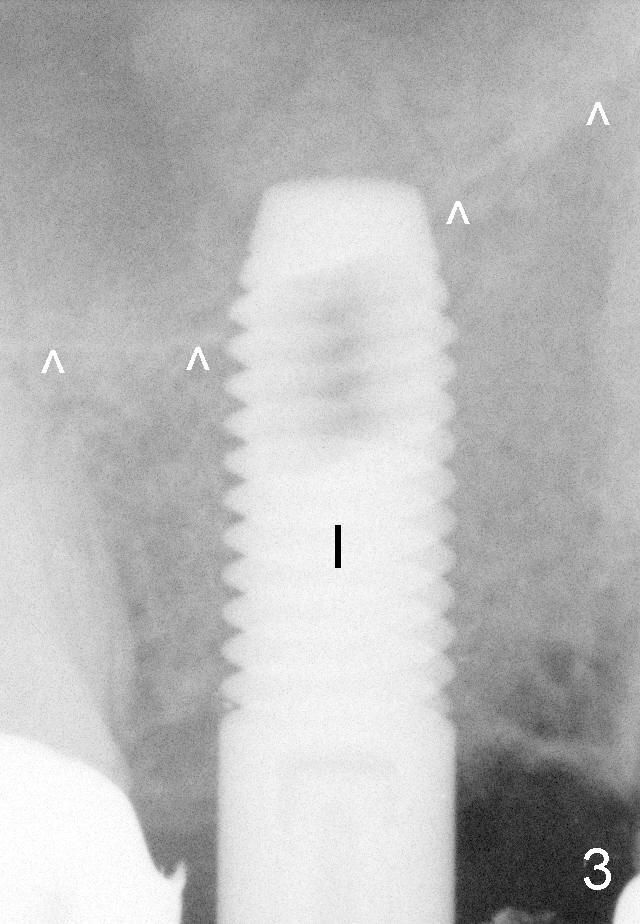
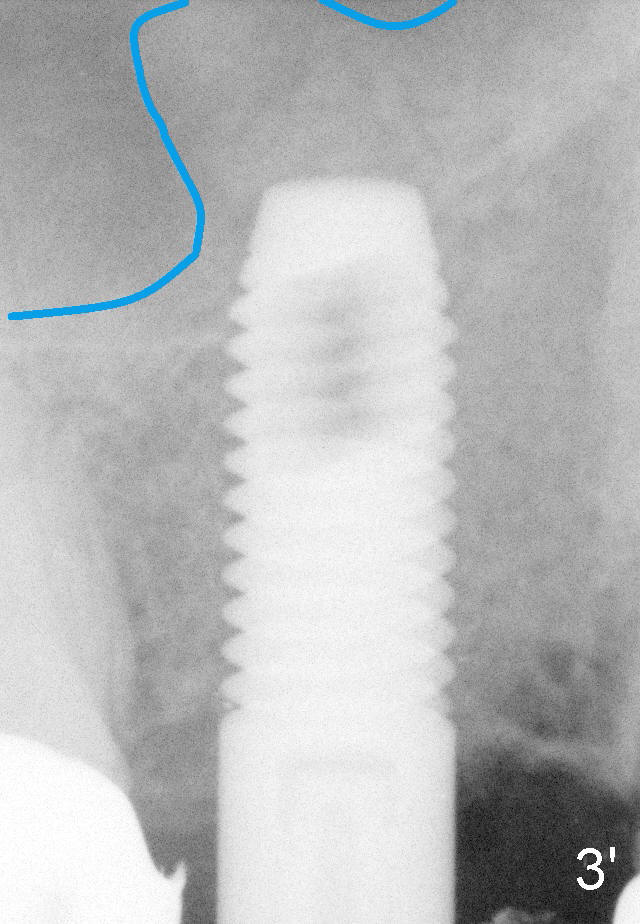
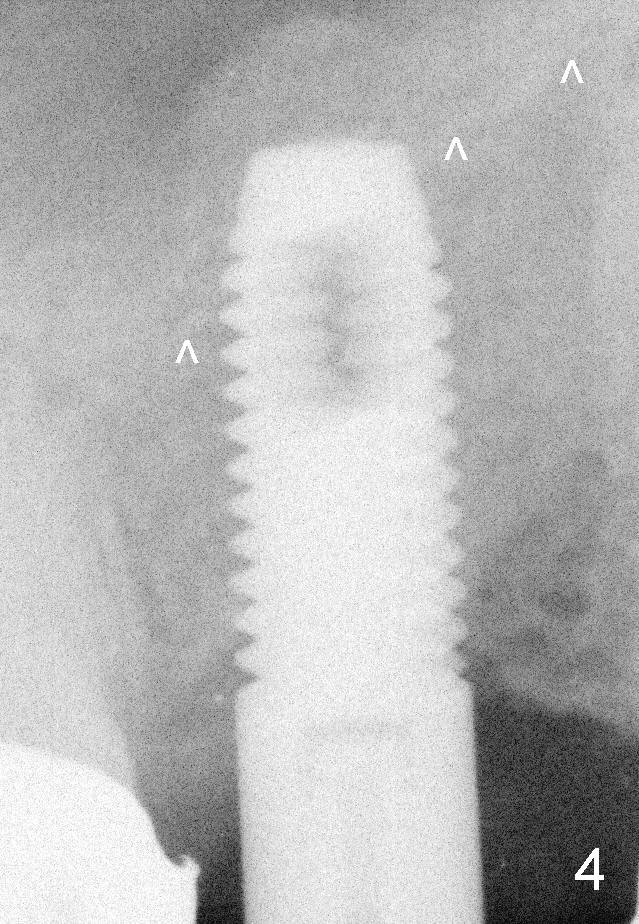
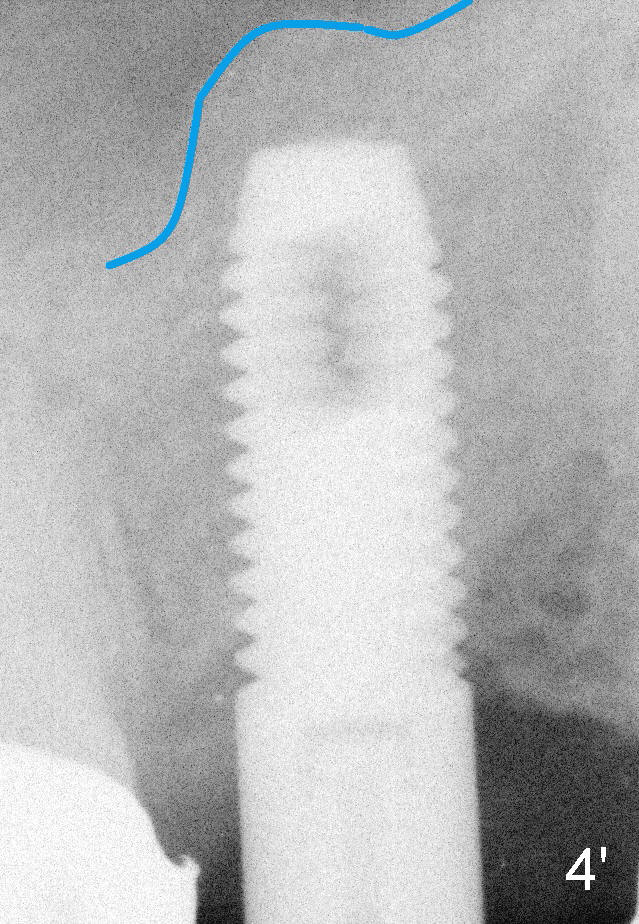
 |
 |
|
 |
 |
 |
 |
 |
Sinus Lift
Above the back part of the upper jaw is a sinus, an empty space (Fig.1 S). The sinus limits the length of an implant to be placed below it. The bottom of the sinus is called sinus floor, a white bone plate (Fig.1 >). The density of the sinus floor is higher than that of the bone below the sinus floor (B). A special surgical technique, called sinus lift, is used to raise the sinus floor so that a longer implant can be used. More importantly it will be a great advantage for the longer implant to be engaged into the tough part of bone (sinus floor plate). The implant will be stronger and more stable. Fig.1' is the same as Fig.1 except the upper outline of the sinus floor is drawn (blue line).
Sinus lift involves using a chisel (Fig.2 C) to push the middle portion of the sinus floor plate into the sinus. The continuity of the sinus floor (bone) is broken (>). But it is not a big deal: although the bone plate is broken, it is attached (connected) to sinus membrane (a thin meat with blood vessel). The displaced bone will not die, but will heal in the new place. This controlled breakage is called green-stick fracture. Amazingly, the upper boundary of the sinus floor (Fig.2' blue line) goes upward immediately (right) above the chisel.
Then a longer implant is pushed into the sinus in a controlled manner (Fig.3 I). The sinus floor remains discontinuous (>), but the upper boundary of the sinus floor remains sticking into the sinus (Fig.3' blue line).
Five months later, the implant heals while the sinus floor (Fig.4 >) and its upper boundary (Fig.4') remains as before.
The diameter of this implant is 5 mm. It appears that the sinus floor has been lifted at least 1-3 mm. Hopefully the implant will withstand chewing forces better.
Xin Wei, DDS, PhD, MS 1st edition 08/04/2012, last revision 08/05/2012